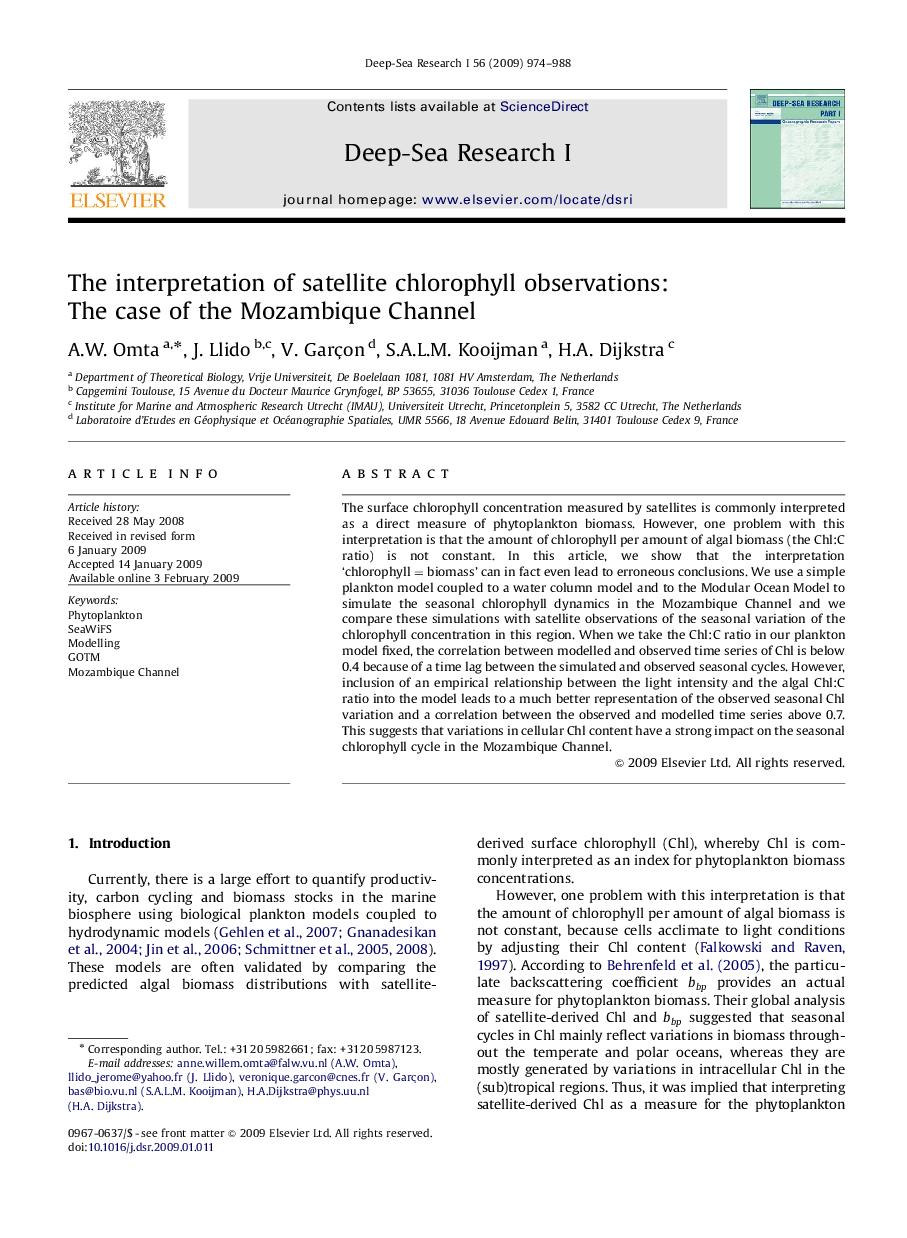| Article ID | Journal | Published Year | Pages | File Type |
|---|---|---|---|---|
| 4535252 | Deep Sea Research Part I: Oceanographic Research Papers | 2009 | 15 Pages |
Abstract
The surface chlorophyll concentration measured by satellites is commonly interpreted as a direct measure of phytoplankton biomass. However, one problem with this interpretation is that the amount of chlorophyll per amount of algal biomass (the Chl:C ratio) is not constant. In this article, we show that the interpretation 'chlorophyll=biomass' can in fact even lead to erroneous conclusions. We use a simple plankton model coupled to a water column model and to the Modular Ocean Model to simulate the seasonal chlorophyll dynamics in the Mozambique Channel and we compare these simulations with satellite observations of the seasonal variation of the chlorophyll concentration in this region. When we take the Chl:C ratio in our plankton model fixed, the correlation between modelled and observed time series of Chl is below 0.4 because of a time lag between the simulated and observed seasonal cycles. However, inclusion of an empirical relationship between the light intensity and the algal Chl:C ratio into the model leads to a much better representation of the observed seasonal Chl variation and a correlation between the observed and modelled time series above 0.7. This suggests that variations in cellular Chl content have a strong impact on the seasonal chlorophyll cycle in the Mozambique Channel.
Related Topics
Physical Sciences and Engineering
Earth and Planetary Sciences
Geology
Authors
A.W. Omta, J. Llido, V. Garçon, S.A.L.M. Kooijman, H.A. Dijkstra,
